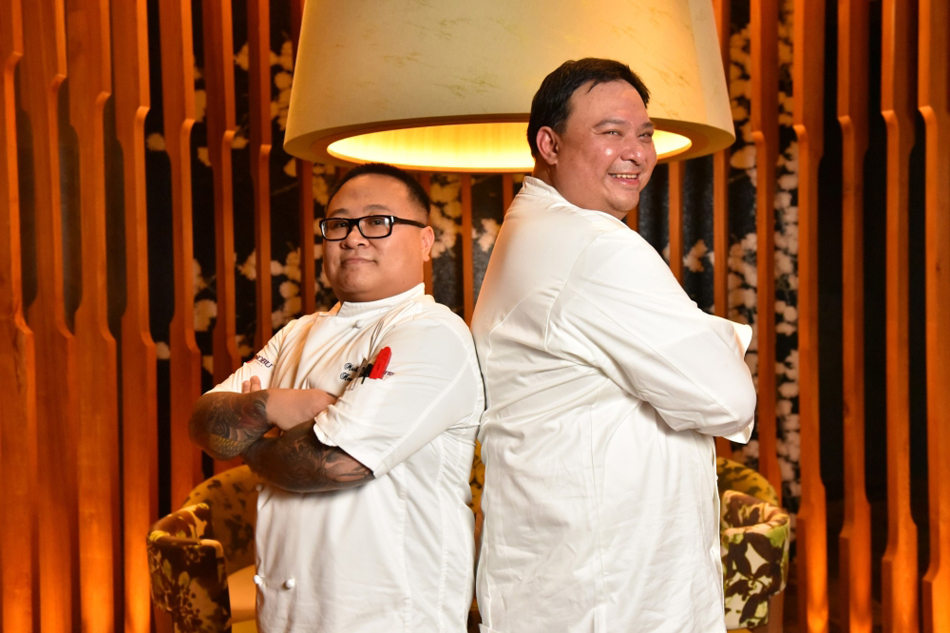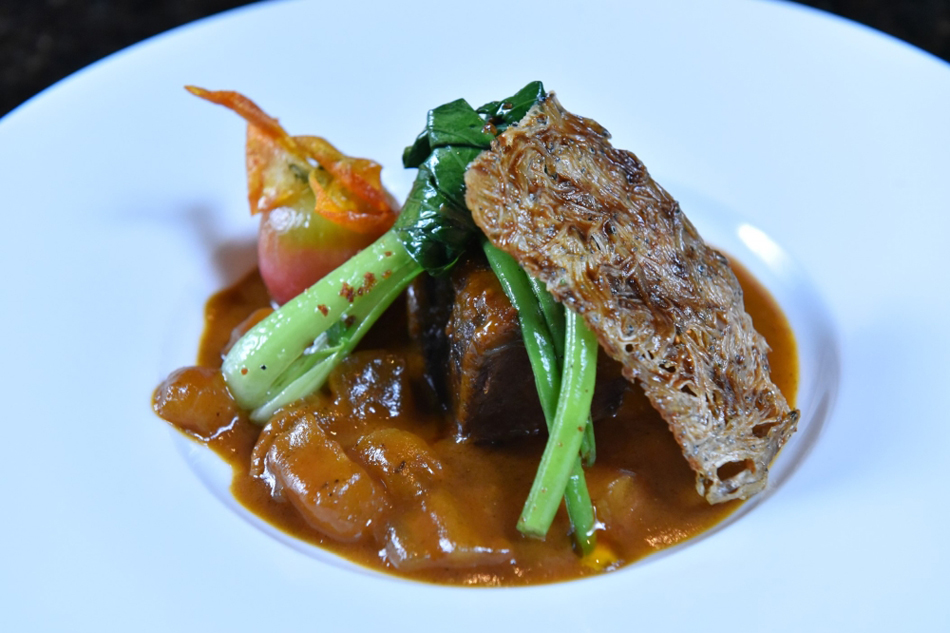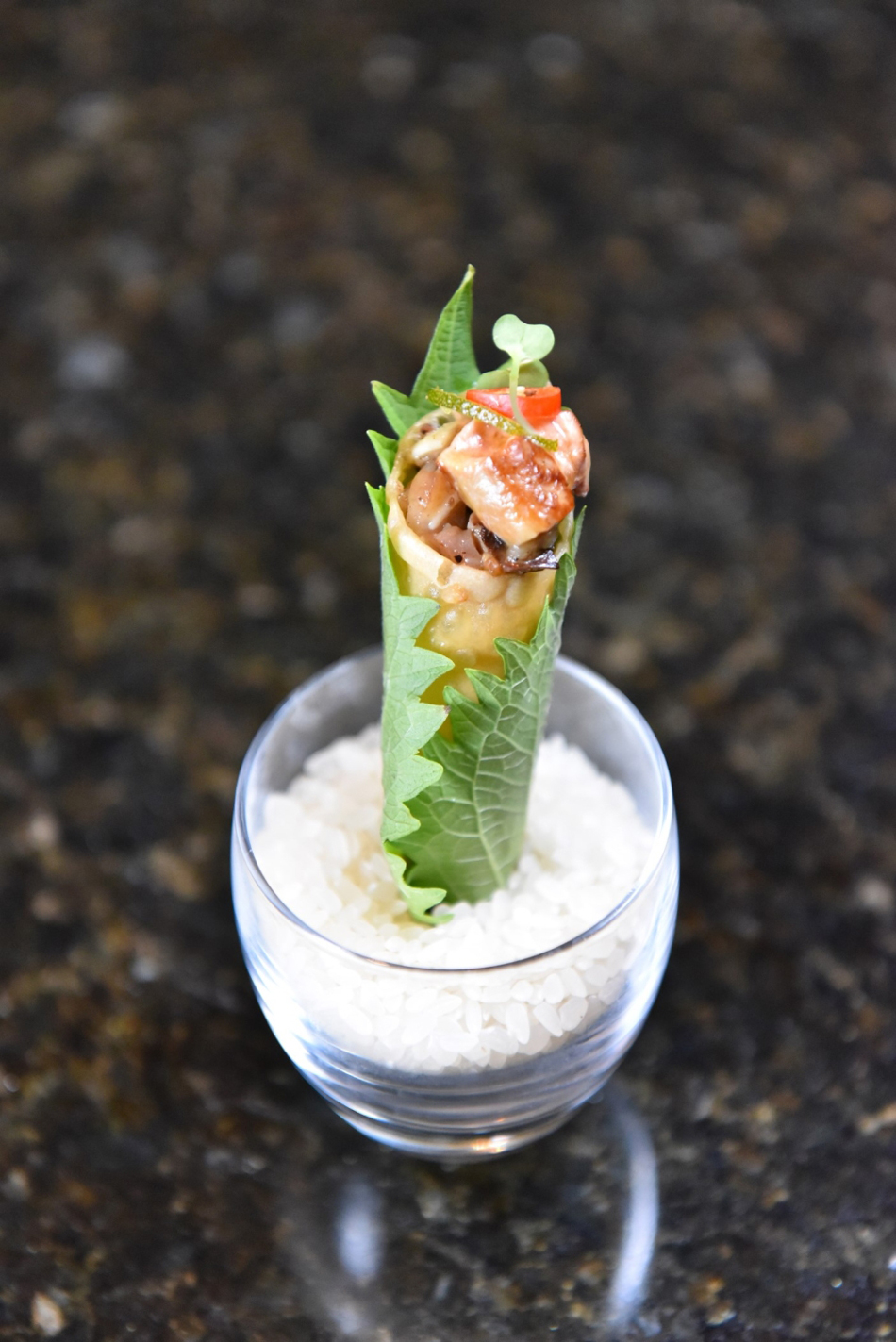What these Pinoy chefs learned from Nobu | ABS-CBN
ADVERTISEMENT

Welcome, Kapamilya! We use cookies to improve your browsing experience. Continuing to use this site means you agree to our use of cookies. Tell me more!
What these Pinoy chefs learned from Nobu
What these Pinoy chefs learned from Nobu
ABS-CBN News
Published Sep 28, 2016 08:50 AM PHT
MANILA – Two Filipino chefs play important roles in the restaurant empire of Japanese celebrity chef Nobu Matsuhisa.
MANILA – Two Filipino chefs play important roles in the restaurant empire of Japanese celebrity chef Nobu Matsuhisa.
One of them is Ricky Estrellado, who works as executive chef at Nobu New York. After working for Matsuhisa for 22 years, Estrellado mentioned the most important thing he has learned from the famous chef.
One of them is Ricky Estrellado, who works as executive chef at Nobu New York. After working for Matsuhisa for 22 years, Estrellado mentioned the most important thing he has learned from the famous chef.
“Customers always come first,” he said. “No matter what they ask for, try your best. Even though it’s so unreasonable, you bend over backwards just to serve your customers. That’s the biggest thing I’ve learned from him.”
“Customers always come first,” he said. “No matter what they ask for, try your best. Even though it’s so unreasonable, you bend over backwards just to serve your customers. That’s the biggest thing I’ve learned from him.”
Matsuhisa himself stressed the value of communicating with guests during his visit to his Nobu property in the Philippines last year.
Matsuhisa himself stressed the value of communicating with guests during his visit to his Nobu property in the Philippines last year.
ADVERTISEMENT
“We talk to a lot of people and ask what they are looking for. Always, the restaurant is about the people,” he said, embodying the high level of service that the Japanese are known for. “I don’t just cook. I also take care of the guests. We always ask the guests what they like, what they do not like and what they don’t eat. It’s all about communication.”
“We talk to a lot of people and ask what they are looking for. Always, the restaurant is about the people,” he said, embodying the high level of service that the Japanese are known for. “I don’t just cook. I also take care of the guests. We always ask the guests what they like, what they do not like and what they don’t eat. It’s all about communication.”
This stance was echoed by Michael De Jesus, another Filipino chef who is part of Matsuhisa’s team. He helms the kitchen of Nobu Manila in the City of Dreams complex.
This stance was echoed by Michael De Jesus, another Filipino chef who is part of Matsuhisa’s team. He helms the kitchen of Nobu Manila in the City of Dreams complex.
De Jesus, who worked at Nobu restaurants in Los Angeles and Las Vegas before returning to Manila, also emphasized how their boss has constantly reminded them to avoid taking shortcuts when it comes to food preparation.
De Jesus, who worked at Nobu restaurants in Los Angeles and Las Vegas before returning to Manila, also emphasized how their boss has constantly reminded them to avoid taking shortcuts when it comes to food preparation.
“There are no shortcuts. Nobu is about two or three steps more to get the job done. He makes it look simple and easy, but there’s a lot of thought into his dishes,” he explained.
“There are no shortcuts. Nobu is about two or three steps more to get the job done. He makes it look simple and easy, but there’s a lot of thought into his dishes,” he explained.
‘REFINED’ PINOY FOOD? YES, IT CAN BE DONE
Estrellado gets to see Matsuhisa four to five times a year, with the two chefs discussing ideas and plans for Nobu New York.
Estrellado gets to see Matsuhisa four to five times a year, with the two chefs discussing ideas and plans for Nobu New York.
ADVERTISEMENT
So far, the Filipino chef has been successful in incorporating elements from his motherland into the menu of the upscale Japanese-Peruvian restaurant.
So far, the Filipino chef has been successful in incorporating elements from his motherland into the menu of the upscale Japanese-Peruvian restaurant.
“Once he puts us in charge, he trusts us with the food… but we can’t stray from what we’ve learned and what Nobu is all about,” he said.
“Once he puts us in charge, he trusts us with the food… but we can’t stray from what we’ve learned and what Nobu is all about,” he said.
“I have crispy pata on my specials menu,” he proudly added, referring to the Filipino dish of deep-fried pig’s trotter. “I’ve also used bagoong (fermented shrimp paste), green mangoes and calamansi.”
“I have crispy pata on my specials menu,” he proudly added, referring to the Filipino dish of deep-fried pig’s trotter. “I’ve also used bagoong (fermented shrimp paste), green mangoes and calamansi.”
The halo-halo made its debut at Nobu Manila last year, with the Filipino icy treat getting a Japanese makeover.
The halo-halo made its debut at Nobu Manila last year, with the Filipino icy treat getting a Japanese makeover.
Just recently, Estrellado and De Jesus collaborated for a Filipino-inspired omakase dinner at Nobu, showing how local cuisine can be taken to new heights.
Just recently, Estrellado and De Jesus collaborated for a Filipino-inspired omakase dinner at Nobu, showing how local cuisine can be taken to new heights.
ADVERTISEMENT
Think sisig turned into a delicate hors d’oeuvre, with the chopped pig’s face placed in a gyoza cone along with foie gras for a delectable combination; spiny lobster tempura in a miso broth jazzed up by yuzu, a creative take on sinigang; and a selection of sushi with familiar items such as tinapa (smoked fish), coconut milk, salted egg and sinangag or garlic rice.
Think sisig turned into a delicate hors d’oeuvre, with the chopped pig’s face placed in a gyoza cone along with foie gras for a delectable combination; spiny lobster tempura in a miso broth jazzed up by yuzu, a creative take on sinigang; and a selection of sushi with familiar items such as tinapa (smoked fish), coconut milk, salted egg and sinangag or garlic rice.
Every dish on the menu was divine, with the two chefs effectively demonstrating the versatility of Filipino ingredients at a global restaurant brand like Nobu.
Every dish on the menu was divine, with the two chefs effectively demonstrating the versatility of Filipino ingredients at a global restaurant brand like Nobu.
“The menu is based on what I would consider staple Filipino food. These are, for me, top of mind when it comes to Filipino food. That’s what we’re going for, we wanted to offer something other people can relate to,” De Jesus said.
“The menu is based on what I would consider staple Filipino food. These are, for me, top of mind when it comes to Filipino food. That’s what we’re going for, we wanted to offer something other people can relate to,” De Jesus said.
“It’s our way of presenting Nobu food, Filipino-style,” he added. “We want to show the world that hey, our food is not just for peasants… We just haven’t had the opportunity to put Filipino food in the limelight. This way, we are able to show you that our flavors matter, and that they can be elevated to this kind of dining experience.”
“It’s our way of presenting Nobu food, Filipino-style,” he added. “We want to show the world that hey, our food is not just for peasants… We just haven’t had the opportunity to put Filipino food in the limelight. This way, we are able to show you that our flavors matter, and that they can be elevated to this kind of dining experience.”
Estrellado agreed, saying, “I’m sure other chefs are doing that now here, too.”
Estrellado agreed, saying, “I’m sure other chefs are doing that now here, too.”
Read More:
chefs
Nobu Matsuhisa
restaurants
Nobu
Ricky Estrellado
Michael De Jesus
Filipino food
Japanese food
ADVERTISEMENT
ADVERTISEMENT





